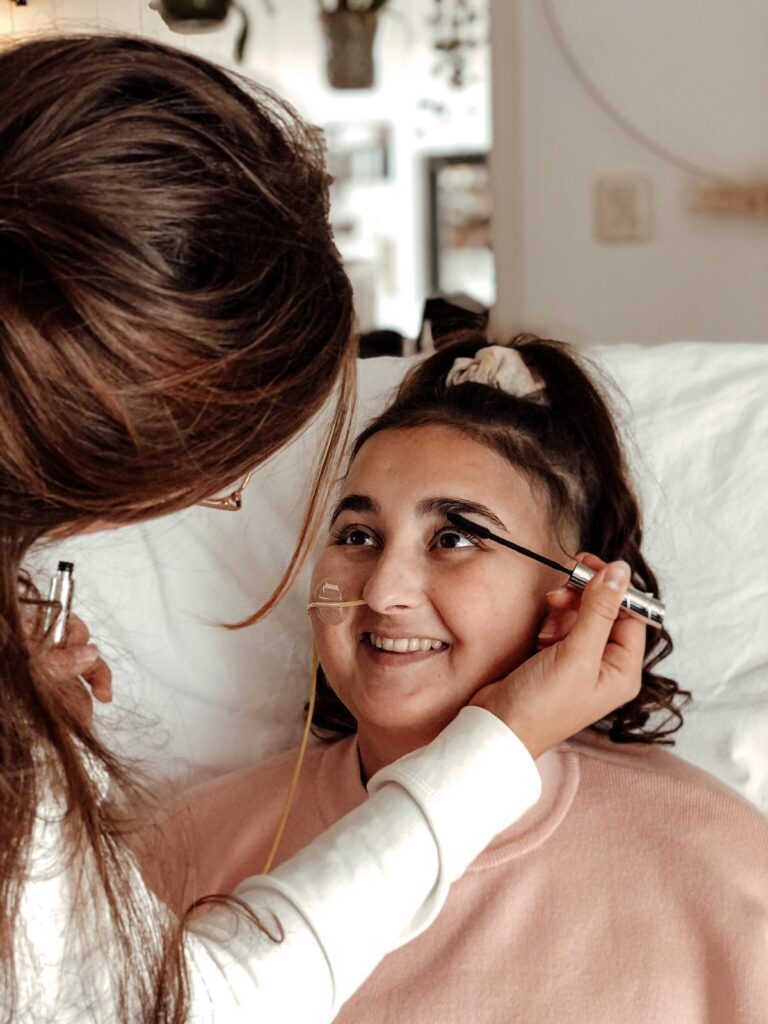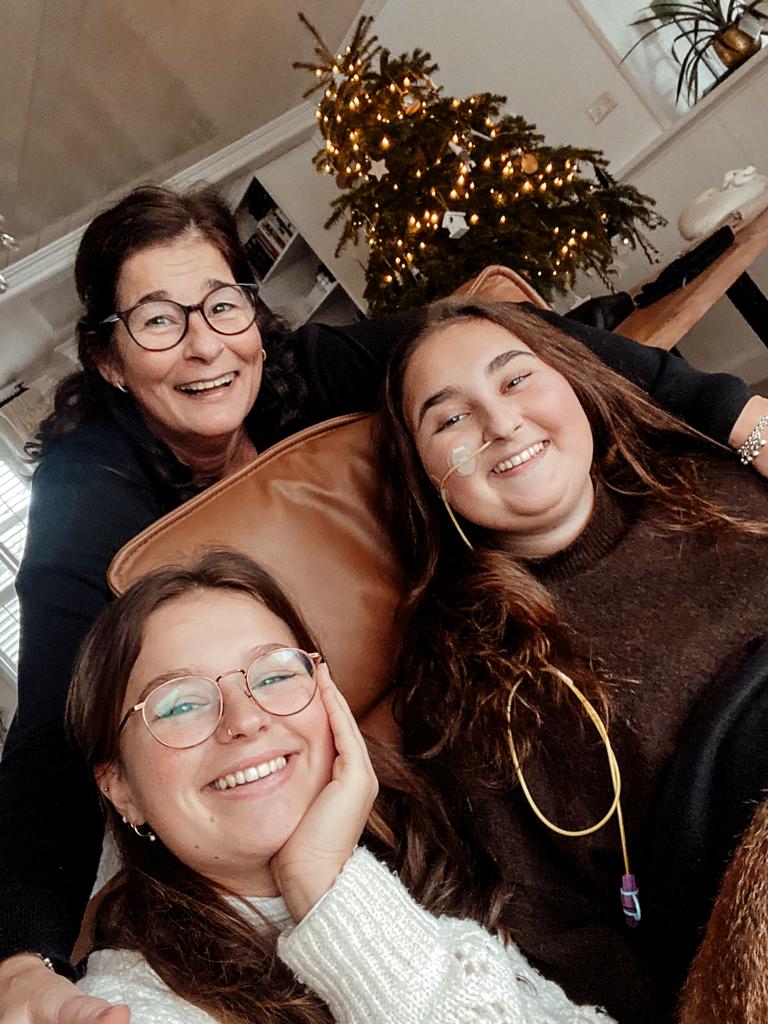Hi,
My name is Emma and I was the biology teacher of Shymo when she was a student at ‘het Zaanlands Lyceum’. In Shymo’s story you can read that the cells of Shymo’s tumor have a mutation called H3K27M. In this blog post I will explain what this means and how this mutation probably caused Shymo’s tumor.
To understand what the H3K27M mutation means, we first have to look at what a mutation is. Our bodies consist of around 37 billion cells. Each cell has a nucleus that contains DNA. Your DNA is also known as your genetic material.You got half of it from your mother and the other half from your father. The DNA from one cell can be compared to a “cookbook” because it contains the instructions, which are called genes (“recipes”), for what a cell can make (“bake”). With the instructions from one gene (“recipe”), a cell can make one protein (“dish”). Each cell in your body has the same DNA (“cookbook”), but because not every cell has the same function, different cells can use different genes (“recipes”) to make different proteins (“dishes”). When a cell does use a gene to make proteins, this gene is said to be active. When a gene is not used by the cell, it is inactive.
A mutation is a change in your DNA. A mutation is not necessarily bad, but a bad mutation can have very harmful consequences. An example: the recipe that you use to make an apple pie is probably different from the one that your neighbor uses (one recipe has mutations compared to the other recipe), but both apple pies are tasteful. But if you are going to add chili powder (a bad mutation!) the end result will probably not be as good…
The mutation that the cells from Shymo’s tumor have, is called H3K27M. Let’s find out what this means. The DNA in one cell is 2 meters long. For this to fit into the cell, the DNA is very tightly wound around little balls of protein. These protein balls are called histones. Histones consist of 4 different types of proteins and one of those is called H3. The cells of Shymo’s tumor have a mutation in the gene (“recipe”) for the H3 protein (“dish”). Cells that have this H3K27M mutation make both normal, good H3 histone proteins and mutated, bad H3 histone proteins. The bad H3 proteins do not function properly themselves and they also block the good H3 proteins from doing their job.
So what do these H3 proteins normally do? In a normal cell, histones can get certain marks. Some of these marks make the DNA wind slightly tighter around the histone balls, while other marks make the DNA wind slightly less tight. When the DNA is wound more tightly, the cell can no longer use the genes (“recipes”) on this part of the DNA (like the pages of your cookbook are stuck together). These genes will then be inactive. On parts of the DNA that wound less tightly, the genes will be more active, which results in more protein being made.
Scientists are not yet completely sure what the effect is of the H3K27M mutation. Based on their research so far, they think that the bad, mutated H3 histone proteins cannot be marked properly. They also think that the bad H3 proteins prevent the proper marking of the good H3 proteins. Without the right marks on the H3 proteins, the DNA will be less tightly wound in certain places. This causes some genes to be more active than they should be. This, in turn, can cause the cells that have the H3K27M mutation to divide more often. For each cell division, a new copy of DNA must be made, to make sure that after the cell has divided itself in two new cells, both new cells have their own copy of the DNA. While making a new DNA copy, mistakes, or mutations, can be made, just like when you make a spelling error while copying your apple pie recipe. The more a cell divides, the more mutations this cell can gain.
The H3K27M mutation was probably already present in Shymo’s cells when she was still very young, maybe even when she was still a baby (although I don’t know this for a fact). or 16 years, the cells with this mutation could have too many cell divisions, gaining more mutations each time. This way, one of the cells in Shymo’s spinal cord gathered exactly the wrong combination of mutations, that together caused this cell to become a cancer cell. When Shymo was 16, this one cell had grown to a tumor. You can read what happened next in Shymo’s story on this website.
I hope that reading this blog post helped you understand what the H3K27M mutation means. If you have any questions, please let me know!
Source of information: https://www.nature.com/articles/s41467-019-09140-x#Sec9




